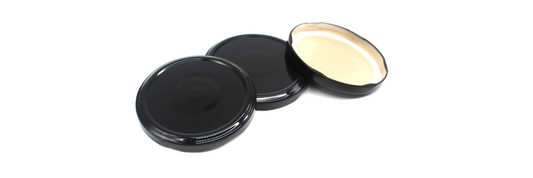Maintaining a cutting board isn’t just about cleaning it after each use—it’s also about ensuring it stays functional, durable, and safe for food preparation. This is where cutting board oil comes in. Cutting board oil is specifically designed to protect and nourish wooden cutting boards, preventing cracking, drying, and bacterial growth. Let’s explore why this simple product is essential and how it can prolong the life of your cutting board.
- Kitchen Cutting Board : Definition, Uses, and Benefits
- How to Make a Cutting Board: Step-by-Step DIY Guide
What is Cutting Board Oil?
Cutting board oil is a food-safe substance, often made from mineral oil or natural oils, used to condition and protect wooden cutting boards. It penetrates the wood, creating a barrier against moisture, stains, and bacteria. By doing so, it enhances the board's appearance, maintains its structural integrity, and ensures a safe surface for food preparation.
Why is Using Cutting Board Oil Important?
-
Prevents Cracking and Drying
Wood is a natural material that reacts to changes in moisture and temperature. Without proper care, a wooden cutting board can dry out, leading to cracks that not only compromise its functionality but also create spaces where bacteria can thrive. -
Maintains Durability and Longevity
Regular oiling keeps the wood fibers flexible and resilient, allowing the cutting board to withstand repeated use without warping or splitting. This maintenance extends the lifespan of the board, making it a worthwhile investment. -
Blocks Bacterial Growth
Oiling a cutting board helps seal its surface, preventing liquids, food particles, and bacteria from seeping into the wood. A well-oiled cutting board is easier to clean and more hygienic for food preparation.
Best Oil For Cutting Boards
Choosing the right oil is crucial to ensuring safety and effectiveness. Here are the best options:
Mineral Oil For Cutting Board (Food-Grade)
Mineral oil, also known as liquid paraffin, is a non-toxic, non-drying oil derived from petroleum. It is colorless, odorless, and flavorless, making it an ideal choice for a variety of applications. One of its standout properties is its ability to repel water, which is why FDA-approved food-grade mineral oil is commonly used to maintain wooden kitchen items like cutting boards, butcher blocks, wooden spoons, and bowls.

It's essential to emphasize the term food-grade, as not all mineral oils are safe for human use. Non-food-grade mineral oils, typically found in auto shops or hardware stores, are designed as industrial lubricants and should never be used in food-related contexts. Always ensure you're selecting the right type for your needs!
Characteristics: Clear, odorless, tasteless, and safe for food contact.
Benefits:
- Penetrates deeply into the wood, creating a moisture-resistant barrier.
- Affordable and widely available.
- Does not go rancid, making it ideal for long-term use.
Coconut Oil Cutting Board
Characteristics: A natural oil with mild antibacterial properties.
Benefits:
- Effective in conditioning the wood.
- Offers natural resistance to bacteria.
- Note: Use refined coconut oil to avoid any lingering smell or taste.

Beeswax
- Often used in combination with mineral oil to create a protective finish.
- Adds a slight sheen to the board while sealing the surface against moisture.
Oil For Cutting Board Use with Caution
Some oils can be used under certain conditions but require extra care:
-
Tung Oil: Produces a durable finish, but pure tung oil takes a long time to cure and may cause allergic reactions in some individuals.

-
Linseed Oil: Boiled linseed oil contains additives that may not be food-safe. Use only pure, food-grade linseed oil if applying to a cutting board.
-
Walnut Oil: Provides an excellent finish, but may cause allergic reactions in those with nut allergies.
Cutting Board Oil Not Recommended
-
Vegetable Oils: Oils like olive oil, canola oil, or sunflower oil can turn rancid over time, leaving an unpleasant smell and taste on your cutting board.
-
Varnish or Polyurethane: These finishes are not food-safe and should never be used on surfaces that come into contact with food.
-
Rubbing Alcohol or Bleach: While effective for cleaning, these chemicals are not suitable for conditioning or protecting the wood.
How to Oil a Cutting Board: Step-by-Step Guide for Long-Lasting Durability
FAQs About Cutting Board Oil
-
Why shouldn’t I use regular vegetable oil on a cutting board?
Vegetable oils can oxidize and become rancid, leaving a foul odor and potentially contaminating your food. -
Can I use pharmacy-grade mineral oil on a cutting board?
Yes, as long as it is labeled "food-grade." Avoid industrial mineral oils, which may contain harmful additives. -
How do I know when my cutting board needs oiling?
If the board looks dry, feels rough, or absorbs water instead of repelling it, it’s time to apply oil. -
Should I oil a new cutting board?
Yes, oiling a new cutting board helps seal the wood, enhancing its durability and resistance to moisture. -
Can I use beeswax to protect my cutting board?
Absolutely. Beeswax, combined with mineral oil, creates a protective layer that seals the wood and adds a polished finish. -
How often should I oil my cutting board?
Ideally, you should oil your board once a month or whenever it starts to feel dry. -
Is coconut oil a good option for cutting boards?
Yes, but ensure it’s refined to avoid an overpowering coconut smell or potential rancidity. -
How do I clean a cutting board before oiling it?
Wash the board with warm, soapy water and allow it to dry completely. Avoid soaking the board, as this can damage the wood.
Conclusion
Cutting board oil is an essential product for anyone using wooden cutting boards. By choosing the right oil and applying it regularly, you can protect your board from damage, extend its lifespan, and ensure a hygienic food preparation surface. Whether you opt for mineral oil, coconut oil, or a specialized blend, maintaining your cutting board will keep it looking great and functioning at its best for years to come.









